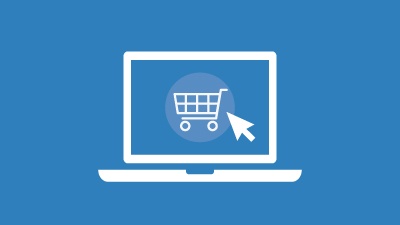The Evolution of Ecommerce and the Era of the Customer

Twenty-four years ago, Amazon was still doing business as Cadabra, two percent of households had access to the internet, and a CD order set in motion a wave of change that brought us to today’s retail environment. Lauded as the first ecommerce transaction in history, Phil Brandenberger sat down at his computer, visited a website, and ordered "Ten Summoners' Tales" by the rock musician Sting.
24 Years Later: Ecommerce Continues to Evolve
Brandenberger then used an encryption code to send credit card information to Net Market, who processed the transaction and sent the order to Noteworthy Music, who in turn shipped the CD via FedEx within hours. At this time, the transaction required a relatively complex knowledge of computing at the time—a Unix-based browser called X-Mosaic, the understanding of fledgling PGP encryption, and an understanding of the download process.
Months later, Pizza Hut filled the second-ever online order using PizzaNet, Pizza Hut’s digital ordering hub for a large pepperoni, mushroom and extra cheese pizza. Innovations came, the internet proliferated, and security protocols made the concept of purchasing something over the internet more palatable for the average user.
Despite hiccups caused by the dot-com bubble, ecommerce continued to grow from the $12.48 for “Ten Summoner’s Tales” to more than a trillion dollars in B2B and B2C transactions. Knowing this, the reason ecommerce has become such an important part of the world is because it empowers customers to shop in a way that best suits them.
Six Topics atop Retailers’ Minds in Ecommerce’s 25th Year
From omnicommerce retail to AI, every innovation that goes into retailing is built around the customer, and the customer has begun to expect the best experience possible no matter from whom they are ordering. Harder yet, a lot of ecommerce in 2018 goes beyond simple demographics—brands need to adapt to each unique customer and they need to do it more quickly than ever.
Recently, Retail Touchpoints looked at the challenges and opportunities that many retailers will face in 2019, a year that is marked by “the intersection of digital and physical,” but driven by globalization and technology.
AI/Machine Learning
“It’s virtually impossible to plan for all customer journeys, because each is essentially a non-linear, self-directed interaction, or ‘micro moment’,” said Sheryl Kingstone of 451 Research. Adapting to new customer needs will require micro targeting and active interaction with customers, and many retailers new and old are leveraging the power of AI for customer service, analysis, and planning/forecasting.
AI helps to simplify the complex, taking into account a deluge of data that would otherwise go unused as retailers look to personalize interactions, find context where context previously didn’t exist, and speed up the way that products are developed.
Personalization and Customer Engagement
With machine learning ideas in place to track the way consumers act, behave, and even think, retailers need to follow through on the data, says Natalie Kotlyar Leader, National Retail & Consumer Products Practice, BDO.
The goal of any personalization initiative should be customer loyalty, and with increasing fickleness from customers, it’s on retailers to create a personalized experience where the customer feels that you are showing them the love, showing them that you’re interested, providing them with valuable personalization—rather than just drowning them in information.
Jeffrey Neville, Senior Vice President and Practice Lead at BRP adds that many retailers may have all this data and all these initiatives in place, but use this information in a way that connects—going back to basics if they hope that customers will become and remain loyal. Among his tips? Set expectations, communicate tirelessly, and never stop changing.
Next-Generation Technologies
Are you ready for voice search? 66% of marketers say they currently have “no plans to begin preparing for voice search,” but with 39 million Americans now owning a smart speaker and Gartner forecasting that by 2020, 30 percent of all searches will be completed without a screen, 2019 will be the year that retailers should dig deep and think of the speaker as a new marketing touchpoint, says Cooper Smith, Director of Amazon Research, Gartner L2.
Smith finds that the path to purchase is much more fragmented when using a smart speaker, citing research that only 2% of Alexa device owners have used them to make a purchase. However, as these devices become a core part of a customer’s media experience, brands can look to Alexa Skills in the same way they look at podcasts—a touchpoint from an engaged and involved audience.
Global Commerce
From mobile commerce to marketplace opportunities, many retailers need to think beyond their own borders not only in terms of customers but of partners. One trend noted by Deborah Weinswig, CEO and Founder of Coresight Research is the rapid expansion of Alipay and WeChat in China. With tens of millions of Chinese tourists traveling abroad each year, US based firms need to look at the way they interact with these brands.
The Chinese population has readily embraced mobile payments—Alipay currently has 520 million monthly active users, of whom 10 million spend $47,000–$75,000 annually through the app. Combine this with their travel preferences (mobile payment was the third-most-important factor when choosing which retailer to buy from when traveling overseas, with 63% of respondents citing it as an influencing factor), and there is a market for accepting this form of payment as a US-based retailer.
While mainland China may be an important part of globalization, the emerging middle class in South American countries and Southeast Asia creates another, says Chris Morley, Chief Commercial Officer at Retail Global. Morley recommends taking what he calls an “island approach,” thinking beyond connected countries and looking to deliver a truly global experience.
Omnichannel
One part of the retail world that has been atop the minds of managers is the emergence and continued expectations driven by omnichannel demands. Retailers are called to create a consistent experience across all channels, says Kelly Sayre, Retail/CPG Analyst at IHL Group, who adds that in addition to the customer experience, having a complete view of inventory is a critical factor in meeting customer needs.
Sayre notes that customer loyalty can only be expected as long as retailers have the products consumers need—29% of customers will simply head to Amazon if you don’t have what they need.
Christina Anderson, Associate Director of eCommerce and Digital at Kantar adds that during this continued push to omnichannel, the physical and digital realms are increasingly blurring into a connected shopper journey. In this, retailers are expected to facilitate the path to purchase, react rapidly to the higher expectations of customers, and connect the digital and physical worlds as much as possible.
The Last Mile
in 2026, 84% of Americans will live in metro areas, with the 10 largest cities set to garner 23% of population growth over that time. What does this mean? Retailers will need to focus on the last mile of the customer journey. However, a customer’s path to purchase will be much different in New York City than it will be in San Francisco, and even more different in Moscow, London, or Milan. Andrea Szasz, Principal, Consumer and Retail Practice at A.T. Kearney recommends four strategies for retailers looking to succeed in this “last mile” of the customer journey:
- Hyper-localize assortment and inventory deployment;
- Localize demand response, leveraging dynamic criteria and data from digital and physical sources;
- Key product development to each big city’s ethnicities and sensibilities; and
- Tailor the mix of in-store and digital customer experience (including home delivery and omnichannel shipping options) to the prevailing tastes of each community.
City-specific strategies with an emphasis on Last Mile will help bold and innovative players grasp first mover advantages by bonding with sophisticated and demanding urban consumers.
Building a Backbone for Your Big Picture Ecommerce Strategy
When it comes to customer satisfaction, you can’t tackle the “what’s next” part of the equation if you don’t nail down the basics. Retailers still need to take steps to ensure that they can develop an inventory strategy before they trust a bot to do it, they need to focus on customers before they think of advanced interactions, and need to ensure they can make it to the last mile.
As you look to grow your business, it pays to have the right plan in place and the right technology to make your job easier. As an Acumatica Gold Certified Partner, Cloud 9 ERP Solutions is a leader in helping companies enhance their ecommerce business and has worked with companies just like yours. We invite you to learn more about our ecommerce capabilities, read customer testimonials, and download the latest guide from Acumatica: The Best eCommerce Starts with Tighter Integration. Ready to learn more? Contact us today!
Additional Ecommerce Resources
Seeing the Entire Picture of Your Inventory
The 3 I's of Smarter Ecommerce
Two Major Reasons You Need to Rethink Your Ecommerce in 2018


